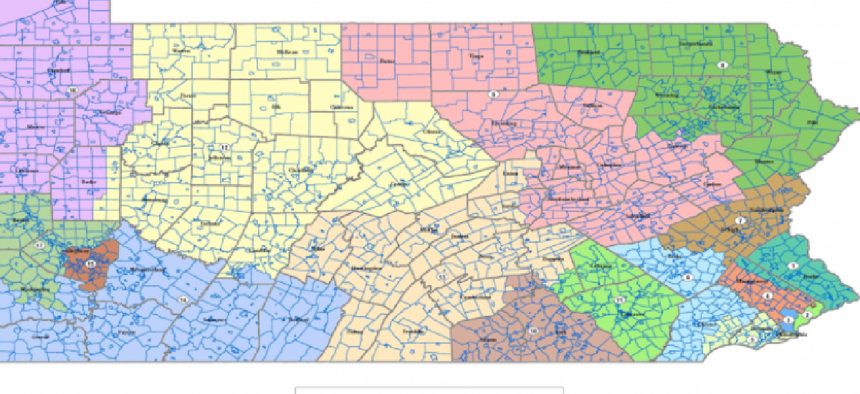General Assembly
House approves congressional map plan despite Democratic opposition

The congressional redistricting plan approved by the House. The Pennsylvania House Republican Caucus
House lawmakers voted largely along party lines Wednesday to approve a new congressional district map despite objections from Democrats who claimed the process to develop the map lacked transparency and input from the public.
The House voted 110-89 to approve the draft map, which separates the state into 17 congressional districts – one less than the current map due to Pennsylvania’s latest U.S. Census numbers.
The new map was based on a citizen submission from redistricting advocate and former Lehigh County Commissioner Amanda Holt, and was later updated by the House State Government Committee.
RELATED ARTICLES
House Republicans praised the draft map, saying it splits fewer municipalities and political subdivisions than the current map, which was drawn by the state Supreme Court in 2018 after the court found the 2011 map to be unconstitutionally gerrymandered.
“The citizen mapmaker developed it without partisan data. We updated it without using partisan data. This is how you end gerrymandering in the Commonwealth of Pennsylvania,” said state Rep. Seth Grove, chair of the House State Government Committee and the prime sponsor of the map. “You base maps on those clear constitutional guidelines spelled out by the Pennsylvania Supreme Court to ensure that you're not basing these maps on partisan information.”
Grove added the map approved by the House on Wednesday lines up with a state Supreme Court opinion from 2018 that said the preservation of district lines and the protection of incumbents should be “wholly subordinate to the neutral criteria of compactness, contiguity, minimization of the division of political subdivisions and maintenance of population equality among congressional districts.”
Grove said the map would result in eight Democratic congressional districts, eight Republican congressional districts and one district that will likely be a toss-up.
Democrats said the development of the map did not live up to Grove’s claims that the process was transparent. State Rep. Scott Conklin, the House State Government Committee’s ranking member, called the draft plan a “partisan map,” noting that Holt’s original submission never advanced out of committee and had to be altered before the committee approved it.
“We aren't talking about the citizens map today,” Conklin said on the floor. “We're talking about the gerrymandered, amended map that you have on the floor, not the citizens map. The citizens map could not even pass our committee.”
State Rep. Pam DeLissio, also a Democrat, shared Conklin’s concerns. “This was not a citizen-driven process,” DeLissio said. “This was an elected official-driven process.” Two Republicans also joined Democrats in voting against the proposed map.
Grove, however, said if Democrats wanted a different map, they could have offered amendments on the floor one day earlier. “No other member introduced a map in the entire legislative branch. This is it,” Grove said.
While the map – contained in House Bill 2146 – was approved by the House without too much fanfare, it still faces some hurdles. It will need to be approved by the state Senate, but even if it does, it still faces opposition from Gov. Tom Wolf.
In a letter sent to House Republican leaders at the end of December, Wolf said the map sponsored by Grove fails to align with principles established by his redistricting advisory panel, and expressed concerns with population differences among the 17 proposed districts.
Wolf also said the map gives a “structural advantage to Republican candidates that far exceeds the party’s voter support.”
Former acting Pennsylvania Secretary of State Veronica Degraffenreid previously told lawmakers that it would be “ideal” for a final redistricting plan to be approved by Jan. 24 – a date that is quickly approaching.
